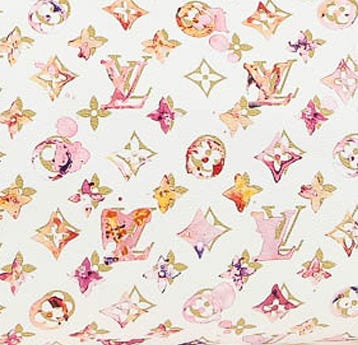Louis Vuitton History and Style Guide
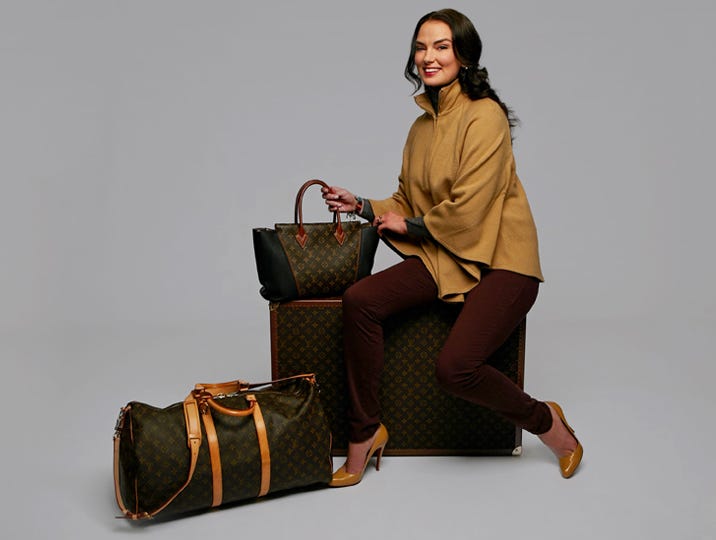
Quick Access:
Louis Vuitton Monogram Vernis Guide
Louis Vuitton Empreinte Color Guide
Louis Vuitton Mahina Leather Color Guide
Louis Vuitton History
Everyone knows the famous Monogram, but do you know the actual history of the Louis Vuitton company? The original Louis Vuitton company was founded by Louis Vuitton in 1854 on Rue Neuve des Capucines in Paris, France. Originally a luggage maker, Louis Vuitton realized that flat trunks could be stacked, as opposed to the rounded trunks that were more popular at the time. In 1858, Vuitton introduced his flat-bottom trunks and France went wild. Everywhere, luggage makers or malletiers, started to imitate Louis Vuitton’s designs.
In 1892, Louis Vuitton died, and the company's management passed to his son, Georges Vuitton. Georges Vuitton had a vision for the company and wanted to grow it into a worldwide company. Then, in 1896... something huge: Georges Vuitton created the iconic Monogram Canvas. By 1913, the Louis Vuitton Building opened on the Champs-Elysees, which was the largest travel-goods store in the world at the time. Soon after, stores were opened in New York, Bombay, Washington, London, Alexandria, and Buenos Aires.
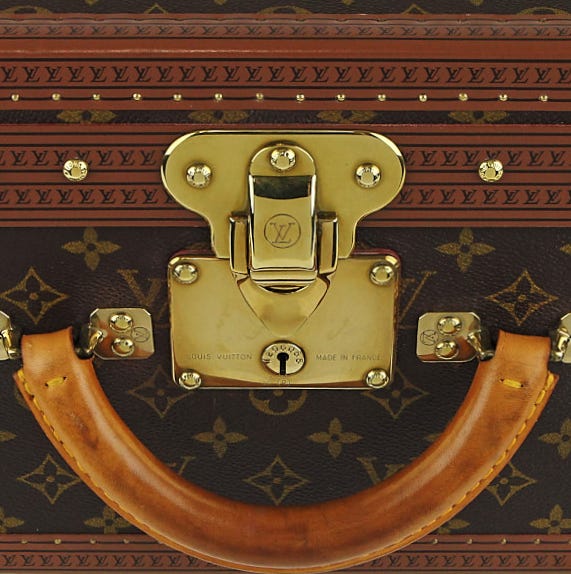
In 1936, Georges Vuitton died, and his son, Gaston-Louis Vuitton, assumed control of the company. Gaston-Louis began to incorporate leather and transform the Monogram canvas into a more pliable material for use on handbags and small leather goods.
1987 saw the creation of LVMH, which was a merging of Louis Vuitton with Moët et Chandon and Hennessy, to create the largest Luxury Conglomerate in the world.
In 1997, Marc Jacobs became the company’s artistic director, introduced first RTW line and introduced the Vernis collection. Marc Jacobs brought a much needed youthful spirit to LV and spurred collaborations with famous artists: In 2001, Stephen Sprouse created the Graffiti and Roses lines; in 2003, Takashi Murakami created the Monogram Multicolore and Cherry Blossom lines; in 2008, artist Richard Prince created the Aquarelle, or more commonly known as the Watercolor Speedy. A reinterpretation of the iconic bag, this style features the classic Monogram pattern with a smudged painted fashion. There are 17 paint colors that are used in the smudging of this Speedy. These were released in white and brown. In 2012, Yayoi Kusama created “Infinitely Kusama” collection. Additionally, Marc Jacobs also introduced LV to collaborating with numerous street artists.
These collaborations are part of the Limited Edition collection that Louis Vuitton releases yearly. Often, these collaborations and collections sell for above their retail prices.
History of Louis Vuitton Styles:
- 1930, the Keepall bag was introduced.
- 1930s, the Alma bag was created by Gaston-Louis Vuitton. It is believed that it was originally made for Coco Chanel as a custom order. Originally, the bag was named ‘Champs of Elysees’ after the famous road in Paris. The original Alma was the creation of Gaston-Louis Vuitton, who named it for the Alma Bridge, a span that connects two Parisian neighborhoods.
- 1932, LV introduced the Noé bag when a champagne house contacted LV to make a bag that would hold 6 bottles of champagne. The bag still serves this function - 4 bottles with the bottom down and the 5th inverted and nestled between the others. This drawstring bag comes in two sizes - the Noe, and the smaller Petit Noe. The name Noe is French for Noah, who was not only famous for loading animals on the Arc two by two, but for his ability to consume wine.
- 1965, film star Audrey Hepburn made a special request to Louis Vuitton to make a mini version of their Keepall duffle just for her. Louis Vuitton obliged Audrey’s request and created what is now known by fashionista’s and handbag lovers as the “Speedy 25”. Now created in 25, 30, 35, and 40, as well as a Bandouliere style that includes a strap.
- 1966, the Papillon was launched.
- 2007, the Neverfull was introduced and has become one of LV’s all-time most successful bags. The Neverfull comes in three sizes, PM, MM and GM. It is made in classic monogram canvas, Damier (both ebene and Azur), Epi leather and has been re-created in limited edition styles.
- Saumur: Named after the city of Saumur and its world-famous riding school, the shape is reminiscent of a horse’s saddle. Additionally, Coco Chanel was born in Saumur, a city in the Loire Valley in France.
- Louis Vuitton bags may come in different sizes while using the same name. As stated above, some sizing is in the format of numbers (25, 30, 35, 40, etc.). These numbers signify the length in centimeters. Louis Vuitton also refers to sizes as BB (Bebe Bandouliere), PM (Petit Modele), MM (Medium Modele), or GM (Grande Modele), for mini, small, medium, and large.
Louis Vuitton Material Type Guide
Monogram Canvas
Monogram Eclipse Canvas
Monogram Denim
Monogram Mat
Monogram Multicolore
Monogram Mini Lin
Monogram Idylle
Monogram Vernis
Damier Azur Canvas
Damier Ebene Canvas
Damier Graphite Canvas
Damier Cobalt Canvas
Epi Leather
Empreinte Leather
Mahina Leather
Suhali Leather
Taiga Leather
Taurillon Leather
Louis Vuitton Monogram Canvas
It was Georges Vuitton, Louis Vuitton’s son, who decided in 1896 to carry on the adventure begun by his father by designing the famous Monogram Canvas. At the time, to foil counterfeiters, he created a canvas bearing bold graphics, a pattern that was instantly recognizable. The unique pattern is composed of flowers, a universal and timeless symbol, and the entwined Louis Vuitton initials. The pattern was based on the trend of using Japanese and Oriental designs in the late Victorian era. The Monogram fabric is crafted out of durable vinyl coated canvas.
Since it was first designed, the Monogram canvas has been associated with natural, vegetable-tanned vachetta cowhide leather. Its smooth, natural grain brings out the harmony of the carefully selected hide. The transparency reveals the natural markings, such as veins and wrinkles, proving it has not been treated. This delicate, easily scratched leather is a testament to the bag’s history and develops a unique amber patina, unique to each bag and greater suppleness with time. The leather starts out with a white tone and gradually darkens over time, leaving a rich caramel or amber color.


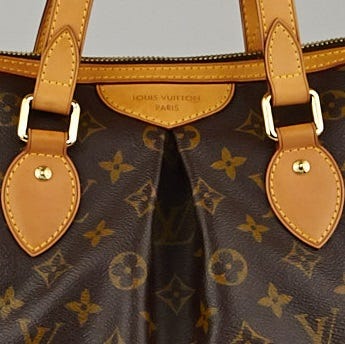
Louis Vuitton Damier Ebene Canvas
Contrary to popular belief, Damier Canvas was created before Monogram canvas. Influenced by the striped Raye canvas that was still being imitated, Vuitton wanted to take his design even further. In 1888, Louis Vuitton created the Damier Canvas pattern, which bore a logo that reads "marque L. Vuitton déposée", which translates into "L. Vuitton registered trademark". 1998 saw the one hundred year anniversary of the release of Monogram canvas, which lead to a re-release of the original Damier canvas. Ready for a fun fact? “Damier” literally translates from French to English to “Checker Board.” The current Damier Ebene pattern is printed on black coated canvas in small lines of two shades of brown to create the unique and lovable checked pattern, which is why Damier Ebene fades to black in some areas when it’s been gently used.

Louis Vuitton Damier Azur
Launched in 2006, this line is a new interpretation of the iconic Damier Canvas, the Damier Azur collection takes us away to the celebrated shores of the French Riviera. At once classic and casual, subtly different, Damier Azur offers a complete collection of products ranging from city bags to luggage.

Louis Vuitton Damier Graphite
The black and grey themed Damier pattern was created in honor of Louis Vuitton’s 120th anniversary of the canvas. Released in 2008, the Damier Graphite collection is a discreet revisit of the classic Damier. Damier Graphite features an understated black and grey tonal pattern with smooth black leather, instead of the iconic brown. Damier Graphite is only released in Men’s accessories and leather goods.
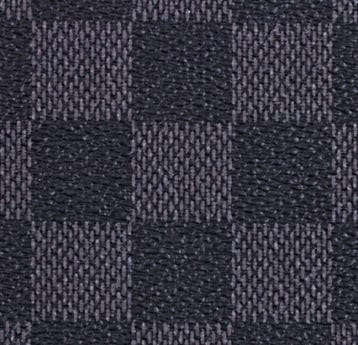
Louis Vuitton Monogram Multicolore
In 2003, in collaboration with Japanese artist Takashi Murakami, the Monogram Multicolore line was born. Takashi Murakami is considered one of the leaders in Japanese neo-pop art. Famous for his colorful, cheerful work, Murakami created the fun and cheerful Monogram canvas which uses 33 colors to create the well known Monogram pattern.
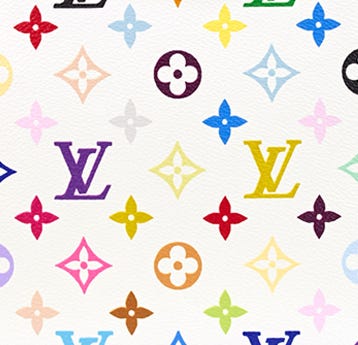

Louis Vuitton Mini Lin / Monogram Idylle
The Monogram Mini Lin Canvas Collection is a newer line that sports a lighter, more supple but resistant canvas. It is made of 58% cotton, 24% linen and 18% polyamide. In 2010, the Mini Lin collection was reinvented and renamed to the Monogram Idylle Canvas Collection.
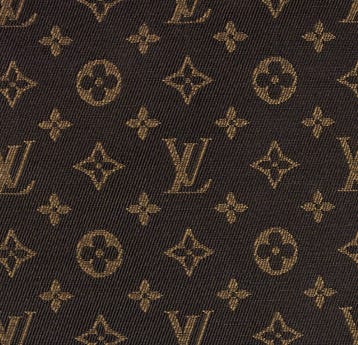
Louis Vuitton Monogram Denim
This unique and playful take on the Monogram pattern debuted in 2005. Crafted out of stonewashed denim with the Louis Vuitton monogram pattern, the Monogram Denim line comes with blue, green, pink, grey, and black.
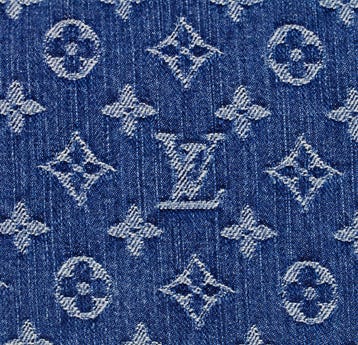
Louis Vuitton Monogram Vernis Color Guide
The Vernis line was introduced in 1997 by then, newly appointed Artistic Director Marc Jacobs. The Vernis line was inspired by RTW collections and is continually released in a range of unique, sparkling colors that highlight the famous Monogram print.. In French "vernis" means ‘varnish’ which explains the shiny and sparkly effect of the bags. Vernis is a coated leather, similar to patent leather, that is embossed with the famous LV Monogram.

Vernis color list:
|
Beige: Introduced in 1998, Discontinued in 2005 |
Rouge Fauviste: Introduced in 2010 |
|
Baby Blue: Introduced in 1998, Discontinued in 2000 |
Vert Impression: Introduced in 2010 |
|
Orange: Limited Edition, Introduced & Discontinued in 1998 |
Gris Art Deco: Introduced in 2010 |
|
Baby Pink: Introduced in 1999, Discontinued in 2000 |
Rose Florentine: Introduced in 2010 |
|
Red: Introduced in 1999, Discontinued in 2006 |
Givre: Introduced in 2011 |
|
Lime/Light Yellow: Introduced in 1999, Discontinued in 2000 |
Blanc Corail: Introduced in 2011 |
|
Purple: Introduced in 1999, Discontinued in 2000 |
Bleu Infini: Introduced in 2011 |
|
Silver: Introduced in 1999, Discontinued in 2000 |
Terre D’Ombre: Introduced in 2011 |
|
Bronze: Introduced in 2000, Discontinued in 2006 |
Bleu Lagon: Introduced in 2012 |
|
Mango/Dark Yellow: Introduced in 2000, Discontinued in 2001 |
Rouge Grenadine: Introduced in 2012 |
|
Fuschia: Introduced in 2003, Discontinued in 2005 |
Jaune Passion: Introduced in 2012 |
|
Lavender: Introduced in 2003, Discontinued in 2005 |
Beige Poudre: Introduced in 2012 |
|
Marshmallow: Introduced in 2004, Discontinued 2005 |
Rose Velours: Introduced in 2013 |
|
Peppermint: Introduced in 2004, Discontinued in 2005 |
Indian Rose: Introduced in 2013 |
|
Perle: Introduced in 2005 |
Rose Angelique: Introduced in 2013 |
|
Framboise: Introduced in 2005, Discontinued in 2006 |
Black Magnetique: Introduced in 2013 |
|
Indigo: Introduced in 2005, Discontinued in 2006 |
Grand Blue: Introduced in 2013 |
|
Noisette: Introduced in 2005 |
Citrine: Introduced in 2014 |
|
Amarante: Introduced in 2007 |
Lilas: Introduced in 2014 |
|
Pomme D’amour: Introduced in 2007 |
Amethyste: Introduced in 2014 |
|
Orange Sunset: Introduced in 2008 |
Dune: Introduced in 2014 |
|
Vert Tonic: Introduced in 2008 |
Galet |
|
Violette: Introduced in 2008 |
Cerise |
|
Vert Bronze: Introduced in 2009 |
Griotte |
|
Rose Pop: Introduced in 2009 |
Rose Litchi |
|
Blue Galactic: Introduced in 2009 |
|
Vernis Color Guide:

Louis Vuitton Epi Leather Guide
Louis Vuitton Epi Leather Color GuideInspired by a grained leather used by Louis Vuitton in the 1920’s, the Epi line, created in 1985, is the first leather line of the House. The Louis Vuitton Epi Leather collection was created to respond to the demand for more durable leather necessary in modern travel conditions. Its originality comes from the graphic two-tone effect which makes it immediately recognizable.
The process consists of printing an intensely dyed leather before applying a special coloration on the surface of the grain, which can withstand any weather condition. The natural stretch of Epi leather also offers good qualities of resistance. Curated in a multitude of colors, we appreciate the durability and timelessness of the Epi leather collection. Older Epi typically comes with goldtone hardware, with a brief interlude of brushed brass and titanium. Louis Vuitton introduced shiny silvertone hardware in 2004. In Spring 2001, the Epi Plage collection was a limited release with a vinyl transparent Epi line, used for the beach. This came in three colors - Grenadine Red, Coconut, and Orange. In 2010, Electric Epi was introduced as a glossy patent leather version of Epi in three colors, Plum, Black, and Amande. In 2011, the Epi collection was released with a new assortment of bright Rainbow colors.

Epi Color Guide (Updated Summer 2018):
|
Black: Introduced in 1985, always available Borneo Green: Introduced in 1985; Discontinued 1998 Kenyan Fawn: Introduced in 1985, Discontinued Toledo Blue: Introduced in 1985; Discontinued 2002 Winnipeg Sable: Introduced in 1985; Discontinued Castilian Red: Introduced in 1987 Cipango Gold: Introduced in 1990, Discontinued Tassil Yellow: Introduced in 1993; Discontinued 2003 Vanilla: Introduced in 2000; Discontinued 2002 Lilac: Introduced in 2000; Discontinued 2003 Pepper: Introduced in 2000; Discontinued in 2005 Moka: Introduced in 2000; Discontinued Mandarin: Discontinued 2006 Myrtille Blue: Introduced in 2003; Discontinued in 2006 Rouge: Introduced in 2006; Discontinued in 2009 Canelle: Introduced 2006 Ivorie: Introduced in 2007 Cassis: Introduced in 2008 Grenade: Introduced in 2008-2009 Rubis: Introduced 2009 |
Menthe: Introduced in 2011 Cacao: Introduced in 2011 Figue: Introduced in 2011 Piment: Introduced in 2011 Indigo: Introduced in 2011 Fuchsia: Introduced in 2011 Gres: Introduced in 2011 Citron: Introduced in 2011 Cyan: Introduced in 2011 Carmine: Introduced in 2011 Quetsche: Introduced in 2014 Pistache: Introduced in 2014 Dune: Introduced in 2014 Saphir: Introcued in 2014 Coquelicot: Introduced in 2014 Mimosa: Introduced in 2014 Rose Nacre: Introduced in 2014 Anthracite Nacre: Introduced in 2014 Bordeaux: Introduced 2014 Grenade (new Grenade): Introduced 2015 |
Rose Ballerine: Introduced 2015 Lilas Naturel Blueberry Jaune Pale Freesia Jonquille Orange Bleu Celeste Navy Blue Safran Camel Turquoise Anthracite Nacre Poppy: Introduced in 2015 Fuchsia: Introduced in 2015 Pivoine: Introduced in 2015 Rouge Pomodoro: Introduced in 2015 Light Denim Prune
|
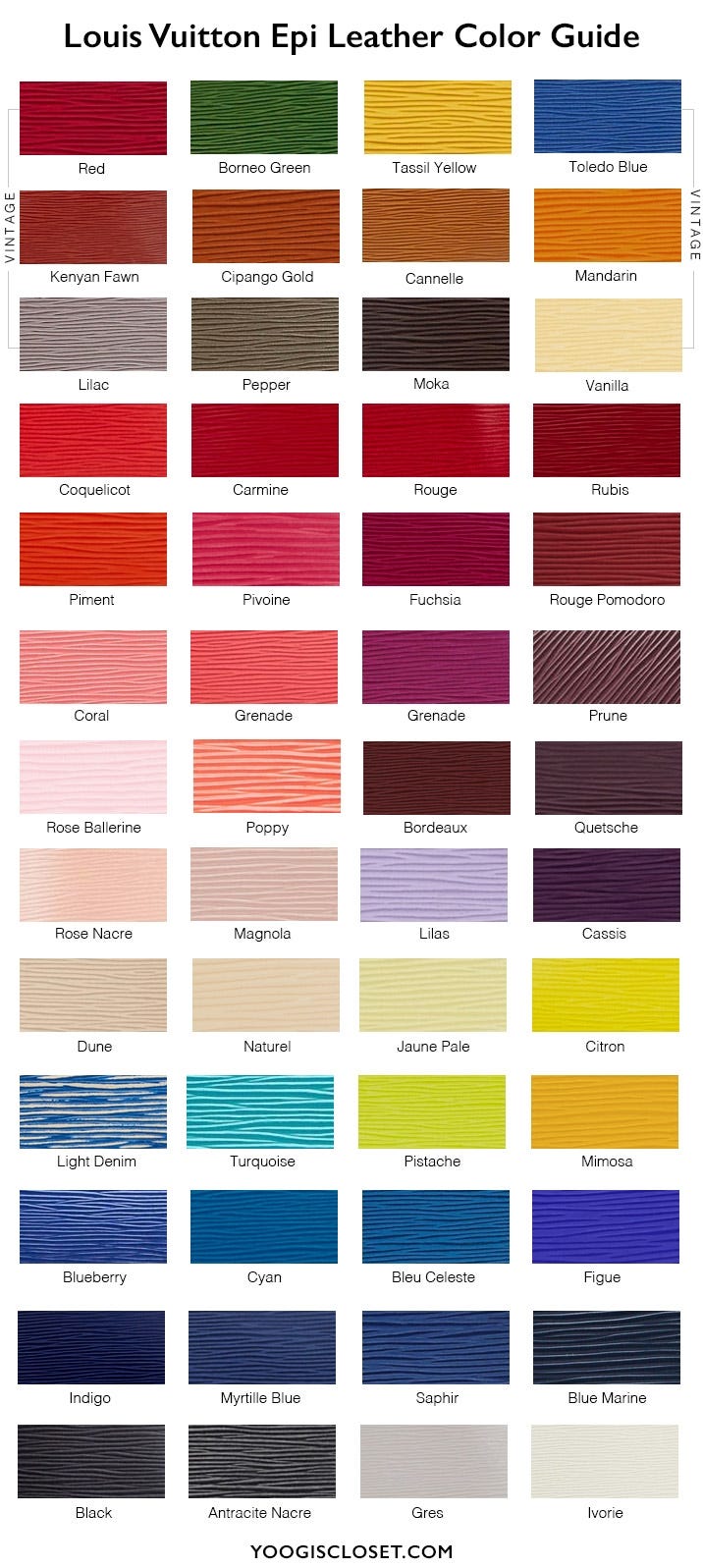
Louis Vuitton Monogram Empreinte Leather
Louis Vuitton Empreinte Color Guide
Released in 2012, the Monogram Empreinte line is both luxurious and durable. After carefully selecting the highest quality of calf leather, it is dyed throughout and then enriched with tannins for a rounder aspect. Then, the leather is drummed several times to softly pull up the natural grain of the skin and reveal its supple, luxurious feel. Finally, the leather is embossed with the iconic Monogram pattern.
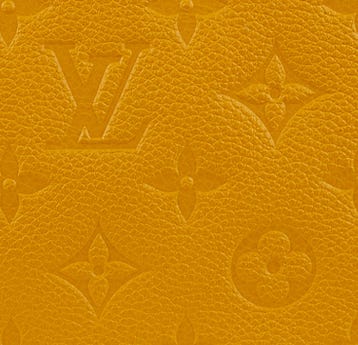
Empreinte Color List:
| Safran | Amethyste |
| Orient | Black |
| Cerise | Galet |
| Jaipur | Bronze |
| Aurore | Havane |
| Flamme | Terre |
| Celeste | Ombre |
| Infini | Neige |
| Orage |
Empreinte Color Guide:

Louis Vuitton Taiga Leather
The taiga leather line is named after the largest coniferous forest in Russia called the Taiga. This line was introduced in 1993 and has remained popular since. Mostly used to construct briefcases and travel accessories, the Taiga line is sophisticated and will always remain a classic. The Taiga line is only released in Men’s accessories and leather goods

Louis Vuitton Suhali Leather
Suhali Leather is made from Suhali goat leather that have been hand-selected from the highest quality goatskins. Launched in 2004, it is natural grain which has not undergone chemical treatment to maintain the excellent balance between suppleness and durability.
Suhali Colors: Plum, White, Geranium, Blue, Tanami, Verone, Sienne, Gold, Black, Silver
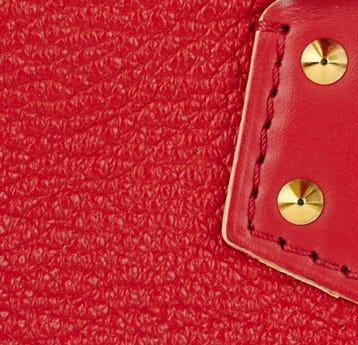
Suhali names are adjectives describing a Louis Vuitton woman:
| L'Impétueux | spontaneous, mischievous |
| L'Épanoui | blossoming, radiant |
| L'Affriolant | alluring |
| L'Aimable | lovable |
| L'Imprevisible | unpredictable |
| Le Talentueux | talented |
| L'Ingenieux | crafty, cunning |
| Le Inoubliable (aka Lockit) | unforgettable |
| Le Fabuleux | Fabulous |
Louis Vuitton Taurillon Leather
Taurillon leather is super soft calf leather with visible grains. You'll feel subtle bumps when running your fingers across the leather. Due to its natural grain, it's more scratch-resistant than lambskin leather and it will soften over time.

Louis Vuitton Monogram Mahina Leather
Introduced in 2007, the Mahina line is made from gorgeous drummed leather and has meticulous perforations in the classic Monogram pattern. The Mahina collection was inspired by the phases and crescents of the moon and in Polynesian culture the Mahina is a lunar deity.

Mahina Color Guide:

Fun Facts:
Trevi: Named after Trevi Fountain in Rome, Italy
Tivoli: An Ancient town near Rome, Italy
Palermo: Named after city in Italy called Palermo
Popincourt: A road in London made famous by the movie "My Fair Lady.” Also, a market. Also originally created to carry knitting yarn.
Bosphore: Named after a body of water near Turkey
Abbesses: A station of the Paris Metro system
Deauville: A luxurious city in France located near Normandy
Amazone: Named after the Amazonian rain forest
Danube: Named after the Danube river, the second longest in all of Europe
Nice: Named after the City of Nice, France.
Beverly: After Beverly Hills, California
Manhattan: Manhattan, New York City
Hudson: A river that runs through New York State
Griet: The subject of a painting of the artist Vermeer
Rita: Named after actress Rita Hayworth
Marilyn: A tribute to Marilyn Monroe
Amelia: Named after Amelia Earhart
Ursula: Named after Ursula Anders
Mary Kate: Named after actress Mary Kate Olsen
Eliza: Eliza Doolittle a character in "My Fair Lady" played by Audrey Hepburn
Priscilla: Named after Joan Crawford's character in "Across to Singapore"
Courtney: Named after singer Courtney Love
Saleya: Is named after flower/produce market in Nice, France
Saumur: Is a city in Loire Valley of France
Theda: Named after silent film actress Theda Bara
Hampstead, Highbury, Knightsbridge & Chelsea: Named for London suburbs
Pont Neuf: Named for a bridge in Paris
Montsouris: Named after a famous park in France
Eva: Named after model Eva Herzigovia
Galliera: Fashion museum in Paris
Tulum: Named after the Mayan City in Mexico
Sofia Coppola: Created by and named after American film director, actress, producer, Academy Award-winning screenwriter Sofia Coppola.
Batignolles: Named after the town in France
Laguito Briefcase: Named after a cigar
Learn More About Louis Vuitton
Louis Vuitton Authentication Guide & Date Codes


